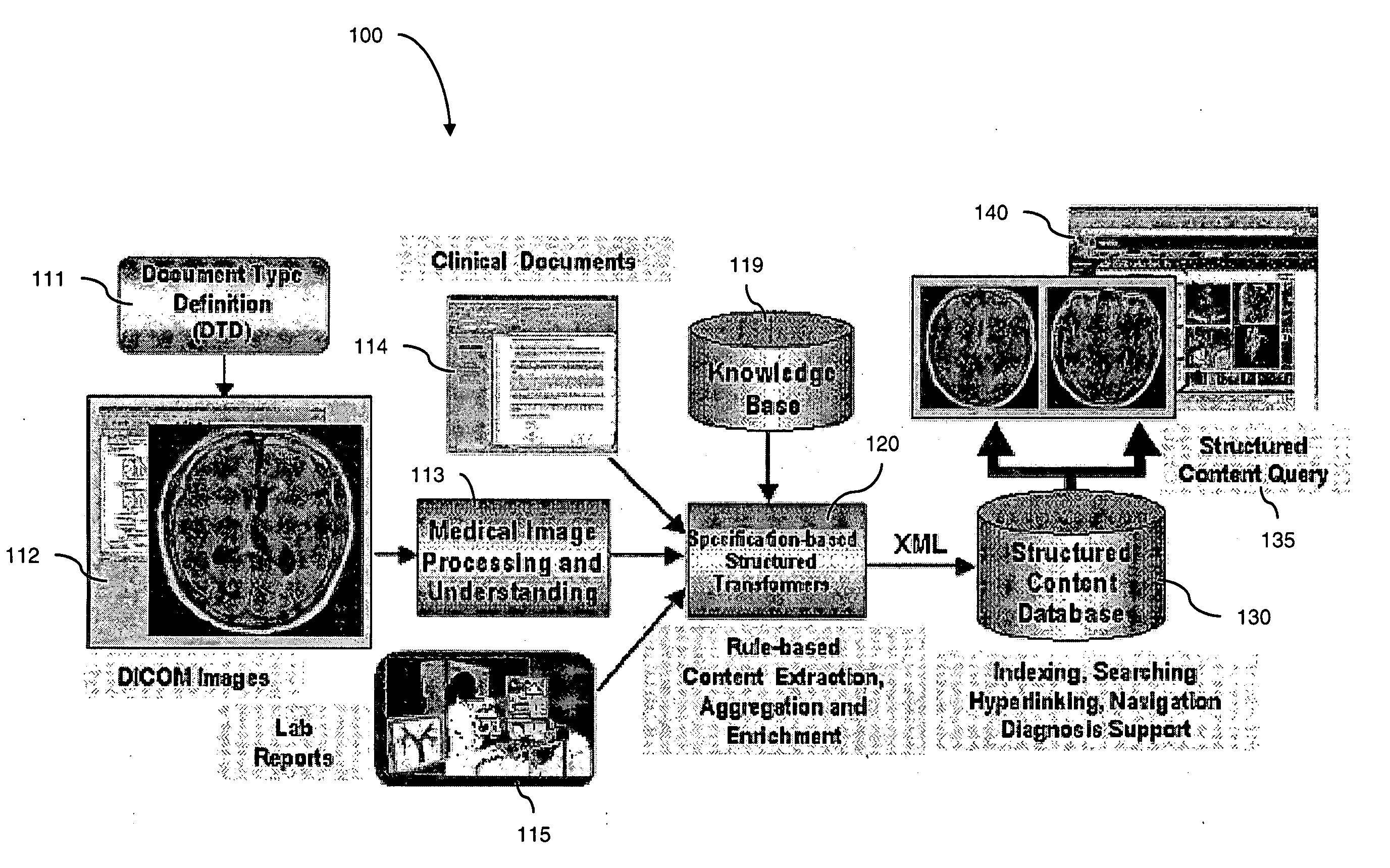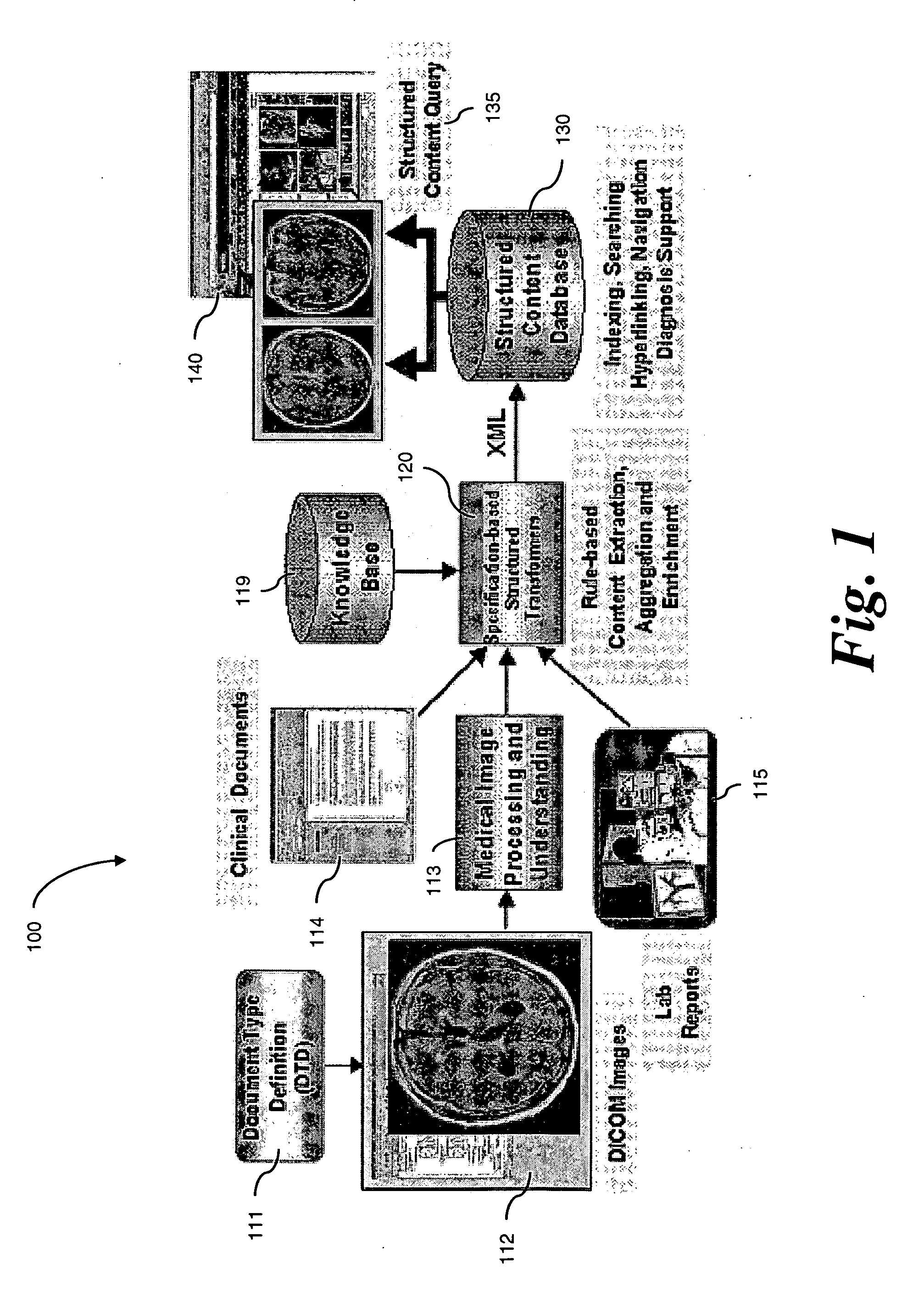Specification-based automation methods for medical content extraction, data aggregation and enrichment
a technology of content extraction and specification, applied in the field of specification-based automation methods for extracting medical content, data aggregation and enrichment, can solve the problems of manual methods used to obtain such enriched information, lack of seemingly integrated methods for automation, and limitations in integrating the tasks of extracting content, so as to achieve flexible and extensible
- Summary
- Abstract
- Description
- Claims
- Application Information
AI Technical Summary
Benefits of technology
Problems solved by technology
Method used
Image
Examples
Embodiment Construction
[0020] In general, the system architecture and method of the present invention provide a specification-based automated transformation (1) from unstructured data to structured data, (2) from components to aggregated data, and (3) from aggregated data to derived (enriched) data or knowledge. The method operates on various initial or intermediate data sources such as databases, clinical documents and medical images to create a single knowledge-enriched information source.
[0021] The method of the present invention may be executed by one or more computer systems that include data memory for storage of data; a microprocessor for performing operations on the data; a signal input for receiving input data and logical code, and a signal output for outputting a signal relating to the data or the outcome of an operation on the data.
[0022] The method of the invention utilizes template specifications and XML-based data capturing. For example, the templates may be based on HL7 / XML template proce...
PUM
 Login to View More
Login to View More Abstract
Description
Claims
Application Information
 Login to View More
Login to View More - R&D
- Intellectual Property
- Life Sciences
- Materials
- Tech Scout
- Unparalleled Data Quality
- Higher Quality Content
- 60% Fewer Hallucinations
Browse by: Latest US Patents, China's latest patents, Technical Efficacy Thesaurus, Application Domain, Technology Topic, Popular Technical Reports.
© 2025 PatSnap. All rights reserved.Legal|Privacy policy|Modern Slavery Act Transparency Statement|Sitemap|About US| Contact US: help@patsnap.com



